JKBOSE 9th Class Mathematics Solutions Chapter 12 Heron’s Formula
JKBOSE 9th Class Mathematics Solutions Chapter 12 Heron’s Formula
JKBOSE 9th Class Mathematics Solutions Chapter 12 Heron’s Formula
Jammu & Kashmir State Board JKBOSE 9th Class Mathematics Solutions
J&K class 9th Mathematics Heron’s Formula Textbook Questions and Answers
INTRODUCTION
As we know that region covered by plane figures (two dimensional figures) is called Area.
In the previous classes we have learnt about figures of different shapes such as squares, rectangles (playground, walls or floor of the classroom), triangles and quadrilaterals. We have also calculated perimeters and the areas of some of these figures like rectangle and square.
We also know that unit of measurement for length or breadth is taken as metre (m) or centimetre (cm) etc. and unit of measurement for area of any plane figure is taken as square metre (m²) or square centimetre (cm²) etc.
In this chapter, we shall lay stress over determining the area of triangle when all its sides are given.
REVIEW
1. Area of a triangle when its base and height are known is calculated by using the formula Area of triangle = 1/2 base × height Formula-I
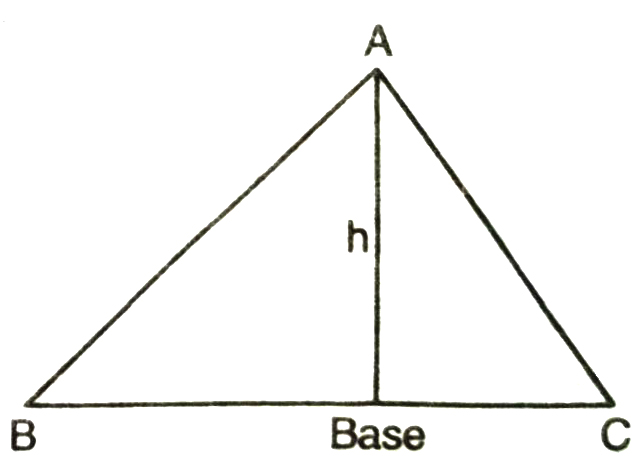
2. Area of an equilateral triangle with side a is √3a²/4.
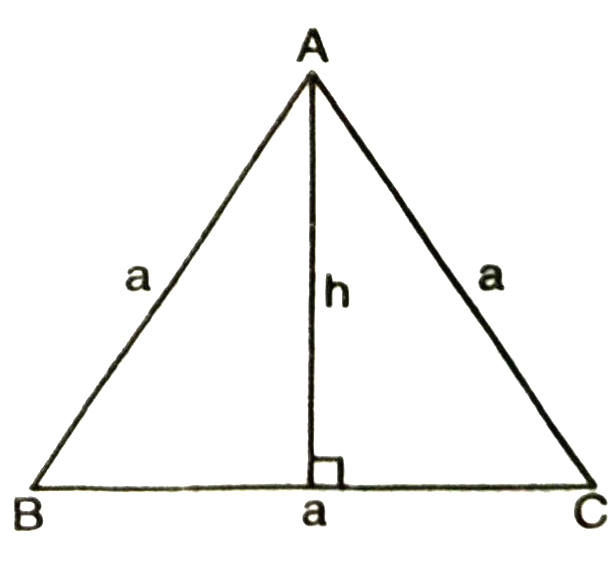
Area of a Triangle-by Heron’s Formula
Heron was a mathematician born in about 10 AD (possibly) in Alexandria in Egypt. He has derived the famous formula for the area of triangle when all its three sides are given.
The formula given by Heron about the area of a triangle, is also known as Hero’s formula.
It is stated as


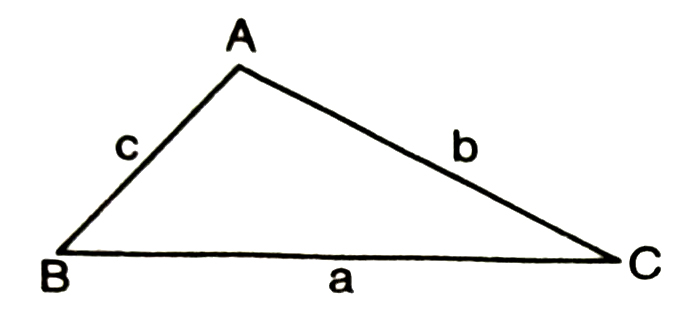
where a, b and c are the sides of the triangle, and s= semi-perimeter i.e. half the perimeter of the triangle = a + b + c
This formula is helpful where it is not possible to find the height of the triangle easily.
TEXT BOOK EXERCISE – 12.1
1. A traffic signal board, indicating ‘SCHOOLAHEAD’, is an equilateral triangle with side ‘a’. Find the area of the signal board, using Heron’s formula. If its perimeter is 180 cm, what will be the area of the signal board ?
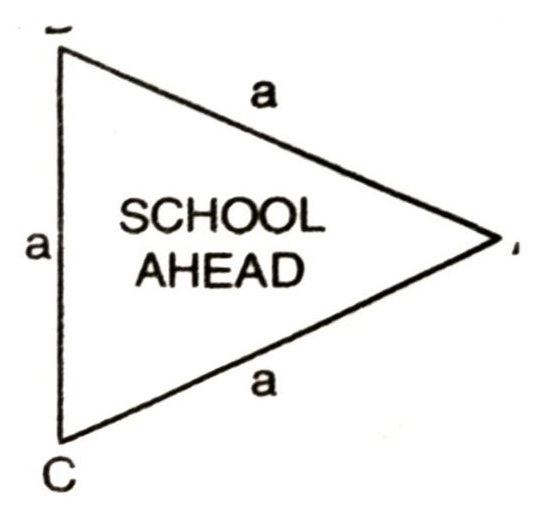
Solution.— Traffic signal board is in the shape of equilateral triangle. Let name it ΔABC.
∴ Side of equilateral triangle ABC = a units (given)
Perimeter of equilateral triangle i.e ; 2s = a + a + a = 3a
Semiperimeter; s = 3a/2
Therefore using Hero’s formula,
Area of triangle = √s(s – a)(s – a) (s – a)
[Area of triangle = √s(s – AB) (s – BC)(s – AC) Here AB = BC = AC = a]
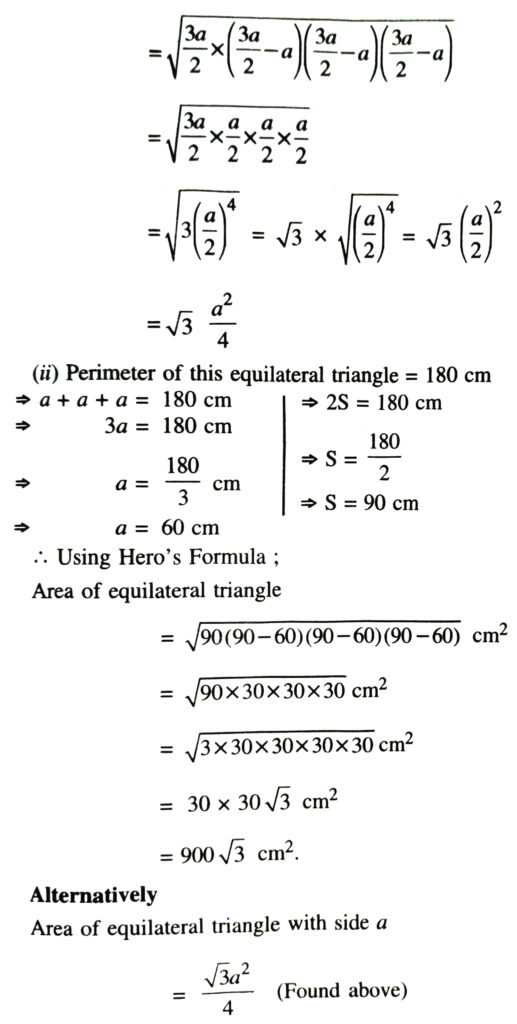
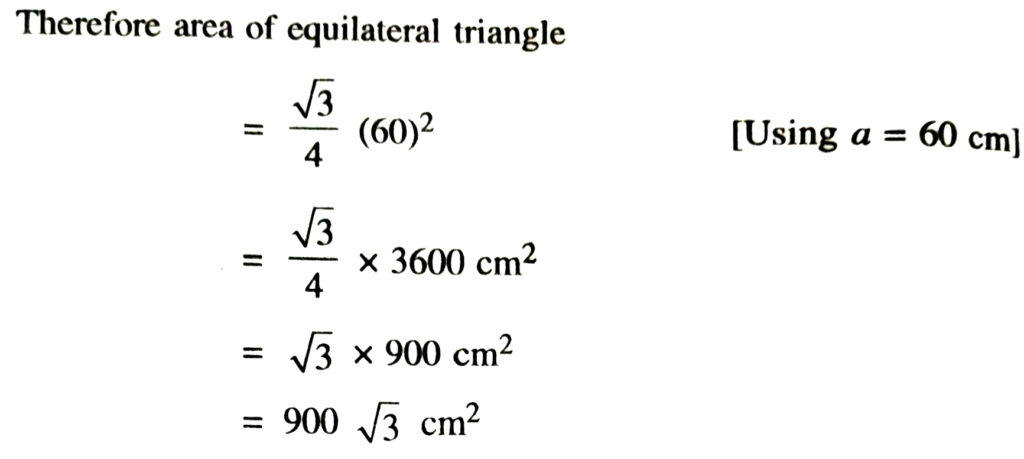
2. The triangular side walls of a flyover has been used for advertisements. The sides of the walls are 122 m, 22 m and 120 m (see Fig.). The advertisement yield an earning of 5000 per m² per year. A company hired one of its walls for 3 months. How much rent did it pay ?
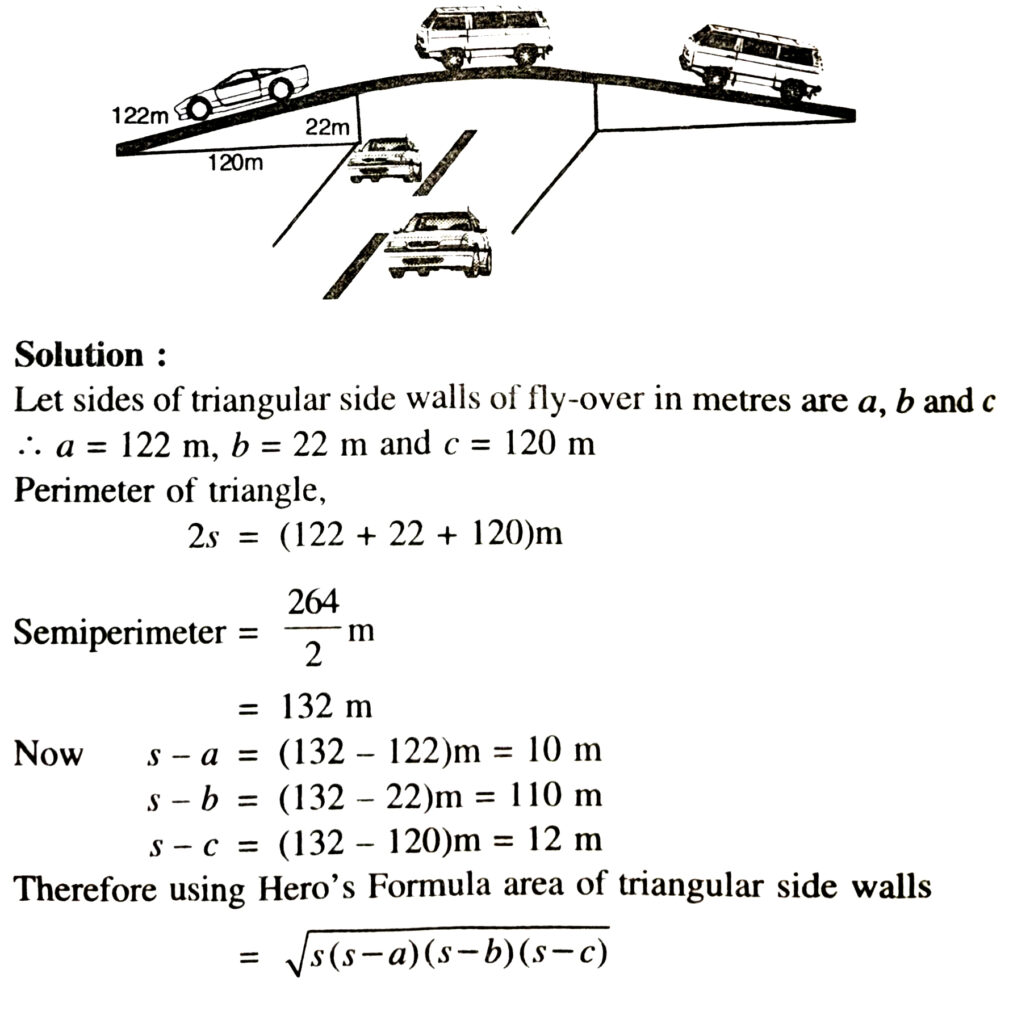
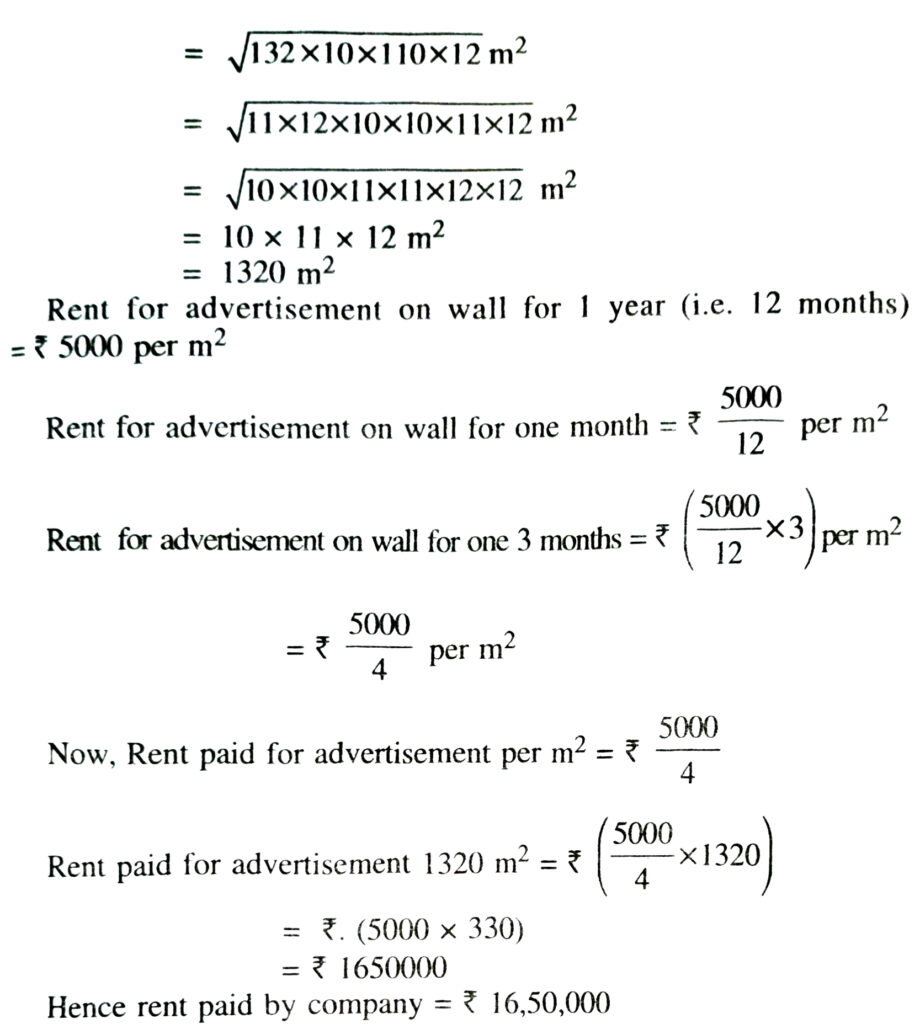
3. There is slide in a park. One of its side walls has been painted in some colour with a message “KEEP THE PARK GREEN AND CLEAN”, (See Fig.). If the sides of the wall are 15 m, 11 m and 6 m, find the area painted in colour.
Solution.— Sides of coloured triangular wall are 15 m, 11 m and 6 m.
∴ Perimeter of this triangular wall;
2s = (15 + 11 + 6)m
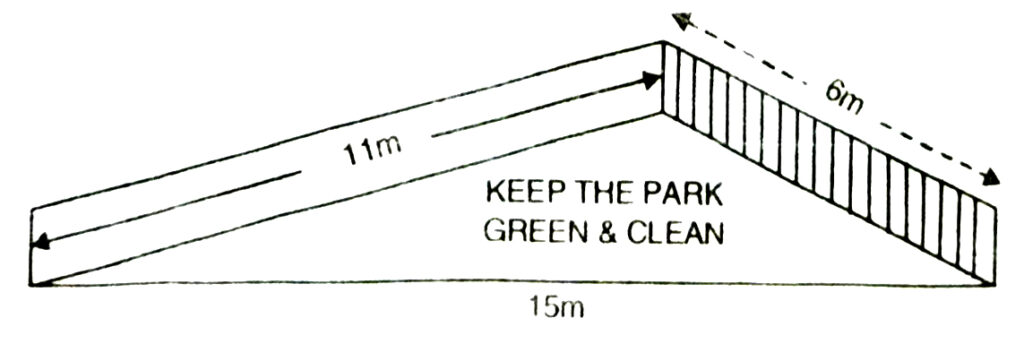
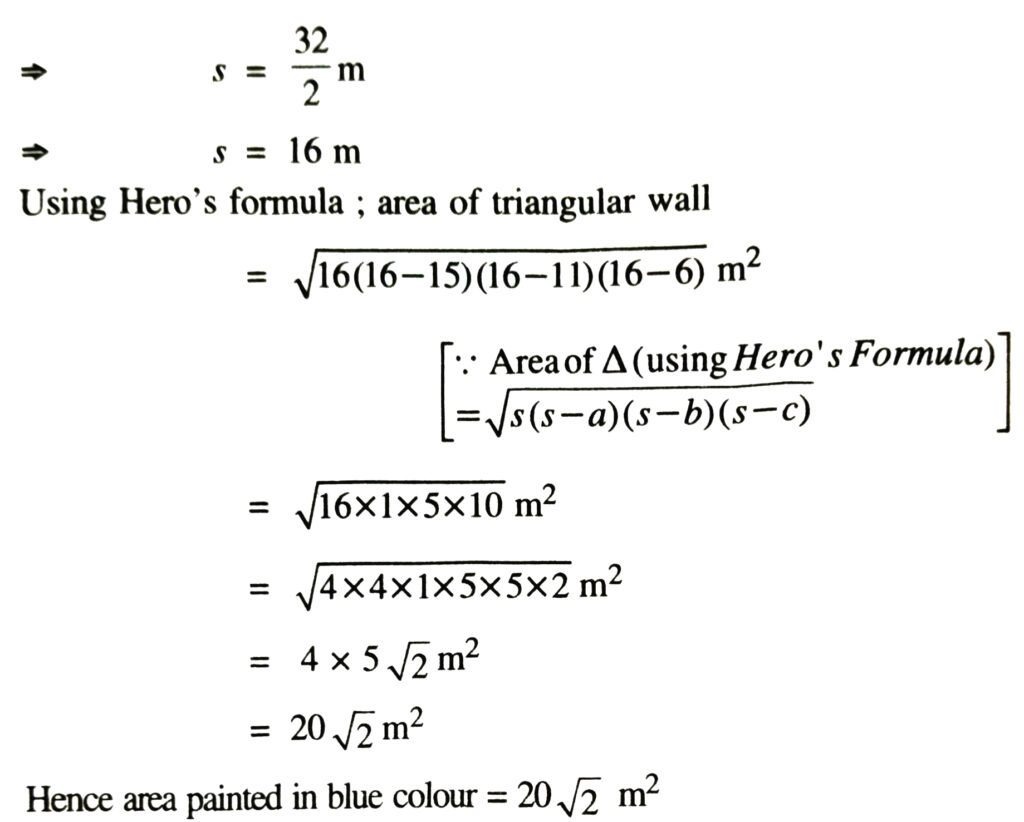
4. Find the area of a triangle two sides of which are 18 cm and 10 cm and the perimeter is 42 cm.
Solution.— Perimeter of triangle = 42 cm
⇒ 18 cm + 10 cm + Third side = 42 cm
⇒ Third side = (42-18 10) cm
⇒ Third side = 14 cm
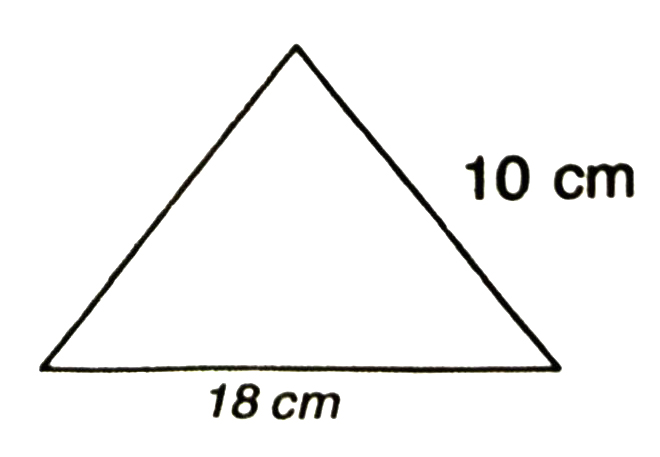
Now Semiperimeter of triangle;
s = 42/2
⇒ s = 21 cm
Now we have three sides of triangle as 18 cm, 10 cm and 14 cm. Area of triangle
= √21(21 – 18) (21 – 10) (21 – 14) cm²
[Area of Δ (by using Hero’s formula) = √s(s – a)(s – b)(s – c) ]
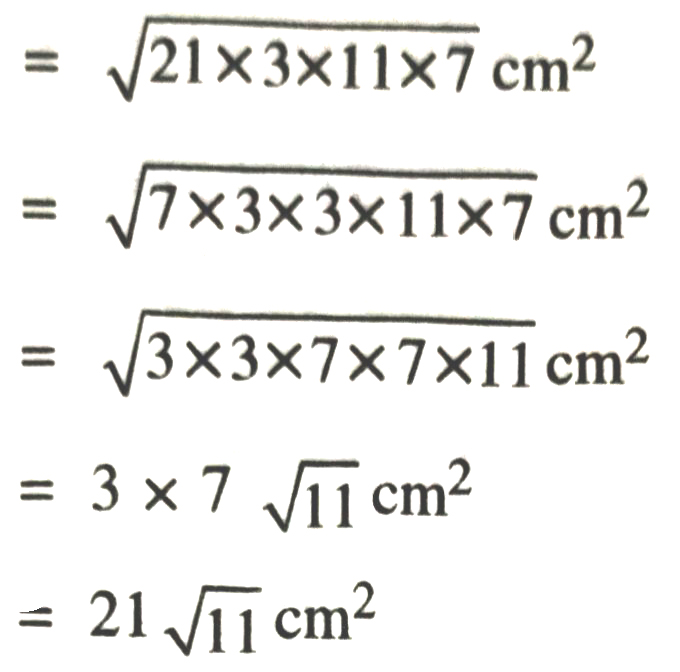
Hence area of triangle is 21 √11 cm²
5. Sides of a triangle are in the ratio of 12 : 17 : 25 and its perimeter is 540 cm. Find its area.
Solution.— Given that the sides of triangle are in the ratio of 12 : 17 : 25
∴ Let sides of triangle in cm are 12x, 17x and 25x
Perimeter of triangle = 540 cm (given)
⇒ 12x + 17x + 25x = 540 cm
⇒ 54x = 540 cm
⇒ x = 540/54 m
⇒ x = 10 cm
Now sides of triangle are
12x = 12 × 10 = 120 cm
17x = 17 × 10 = 170 cm
and 25x = 25 × 10 = 250 cm
Semiperimeter; s of triangle = Perimeter/2
= 540/ 2 cm
= 270
Using Hero’s formula ;
Area of triangle = √270(270 – 120)(270 – 170)(270 –
= √270 × 150 × 100 × 20 cm²
= √30 × 3 × 3 × 30 × 5 × 10 × 10 × 2 × 2 × 5 cm²
= √2 × 2 × 2 × 3 × 3 × 5 × 5 × 10 × 10 × 30 × 30 cm²
= 2 × 3 × 5 × 10 × 30 cm²
= 9000 cm²
Hence area of required triangle is 9000 cm².
6. An isosceles triangle has perimeter 30 cm and each of the equal sides is 12 cm. Find the area of the triangle.
Solution.— Perimeter of an isosceles triangle = 30 cm
⇒12 cm + 12 cm + Third side = 30 cm
[∴ in an isosceles triangle two sides are of equal length and here each of the equal sides is 12 cm]
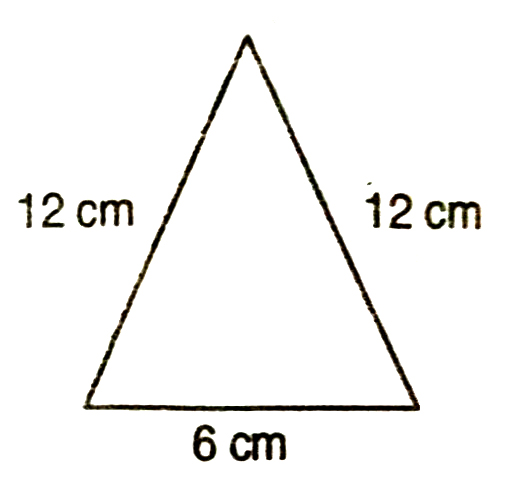
⇒ Third side = (30 – 12 – 12) cm
⇒ Third side = 6 cm
Now semiperimeter; s of isosceles triangle = Perimeter / 2
⇒ s = 30/2
⇒ s = 15 cm
Using Hero’s formula ; area of triangle
= √15(15 – 12)(15 – 12) (15 – 6) cm²
= √15 × 3 × 3 × 9 cm²
= √15 × 3 × 3 × 3 × 3 cm²
= 3 × 3√15 cm²
= 9√15 cm²
Hence required area of an isosceles triangle = 9 √15 cm².
Application of Heron’s Formula in Finding Areas of Polygons Area of polygon can be calculated by dividing the polygon into triangles and using Heron’s formula for calculating area of each triangle.
Many a time the fields are in the shape of quadrilaterals. We need to divide the quadrilateral in triangular parts and then use the formula for area of the triangle.
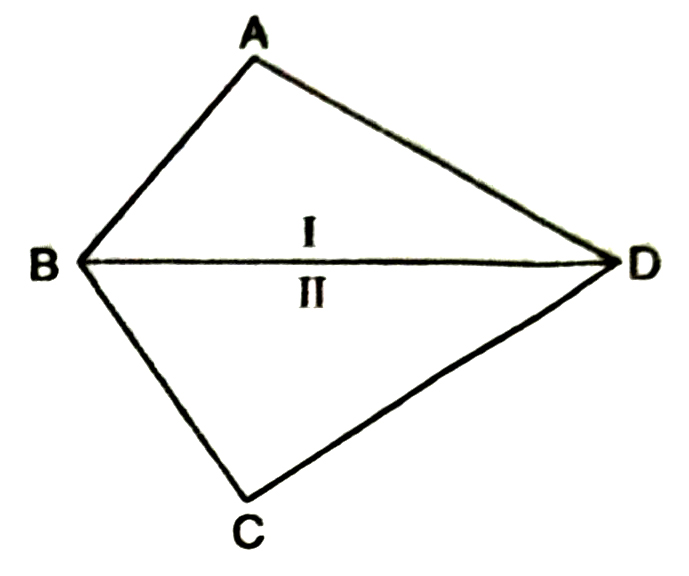
In fig., diagonal BD ; divides the quadrilateral ABCD in two triangles
(i) ΔABD (ii) ΔBCD
∴ Area of quadrilateral ABCD
= Area of ΔABD + Area of ΔBCD
TEXT BOOK EXERCISE – 12.2
1. A park, in the shape of a quadrilateral ABCD, has ∠C = 90°AB = 9 m, BC = 12 m, CD = 5 m and AD = 8 m. How much area does it occupy ?
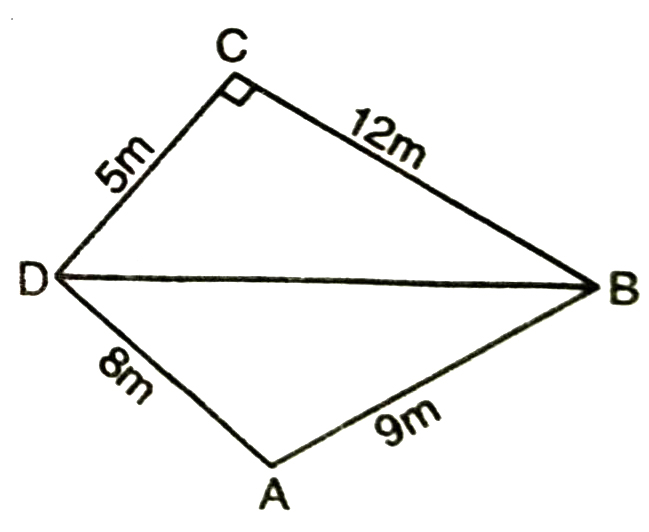
Solution.— In Fig., if we join BD, we observe that diagonal BD divides quadrilateral ABCD in two triangles (i) Right triangle BCD and (ii) ΔABD.
In rt. ΔBCD, rt. angle is at C.
Therefore Base; CD = 5 m
and Altitude, BC = 12 m
Area of rt. ΔBCD = 1/2 × CD × BC
= 1/2 × 5 × 12 m2
= 30 m2
To find the area of ΔABD; we require side BD, therefore to find it as follows :
In rt. ΔBCD, rt. angle at C,
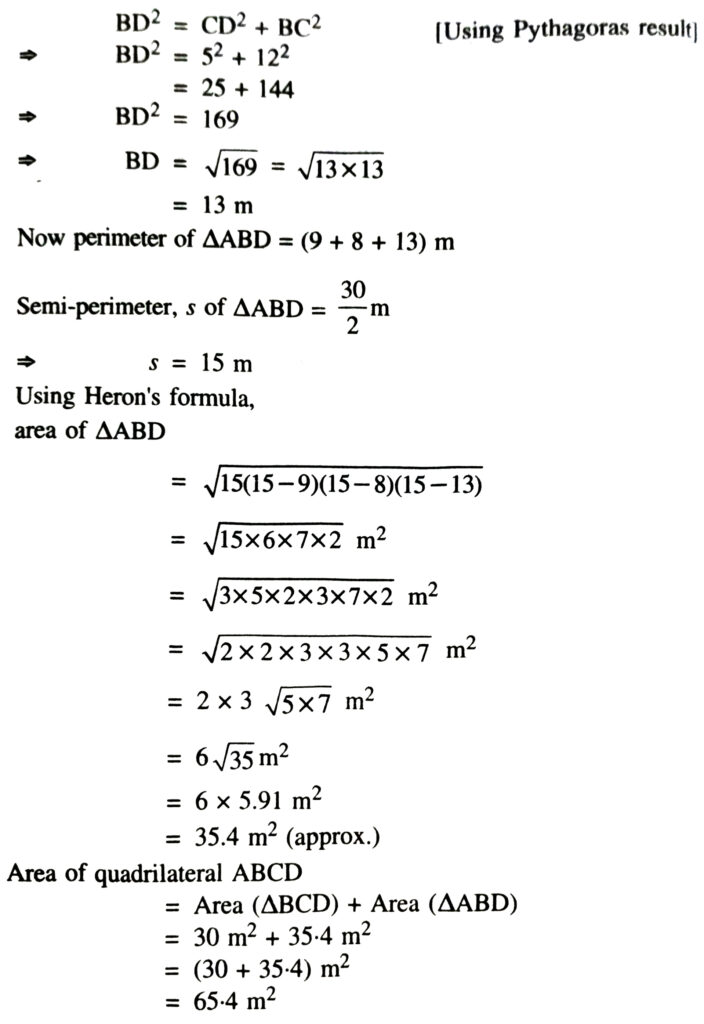
Hence area occupied by the quadrilateral is 65.4 m².
2. Find the area of a quadrilateral ABCD in which AB = 3 cm, BC = 4 cm, CD = 4 cm, DA = 5 cm and AC = 5 cm.
Solution.— In quadrilateral ABCD; diagonal AC divides it in two triangles viz. ΔABC and ΔADC
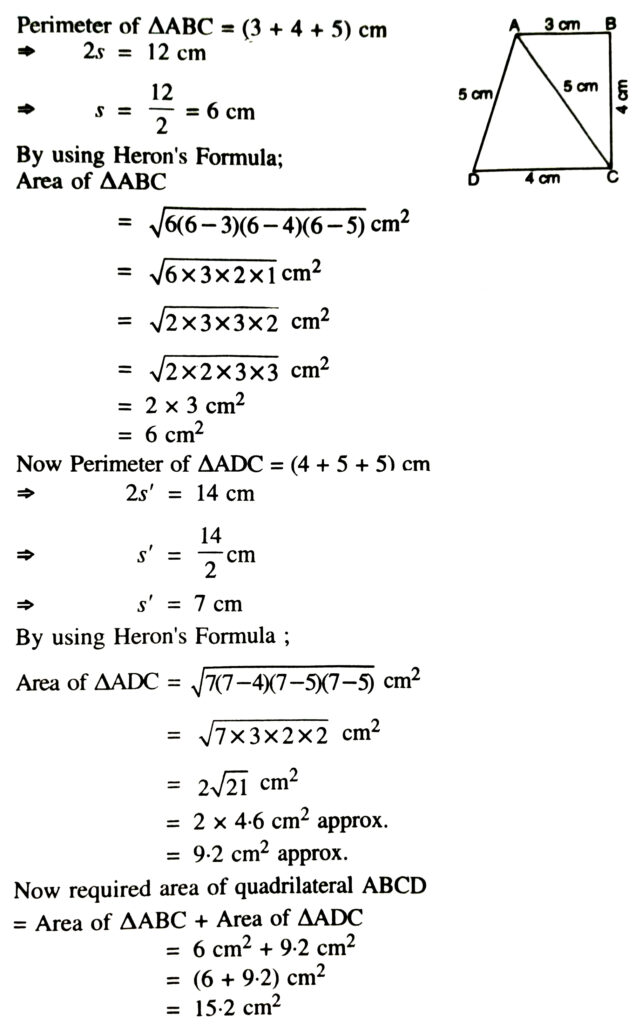
Hence required area of quadrilateral of ABCD is 15.2 cm².
3. Radha made a picture of an aeroplane with coloured paper as shown in Fig. Find the total area of the paper used.
Solution.— Area of triangular part I using Heron’s formula
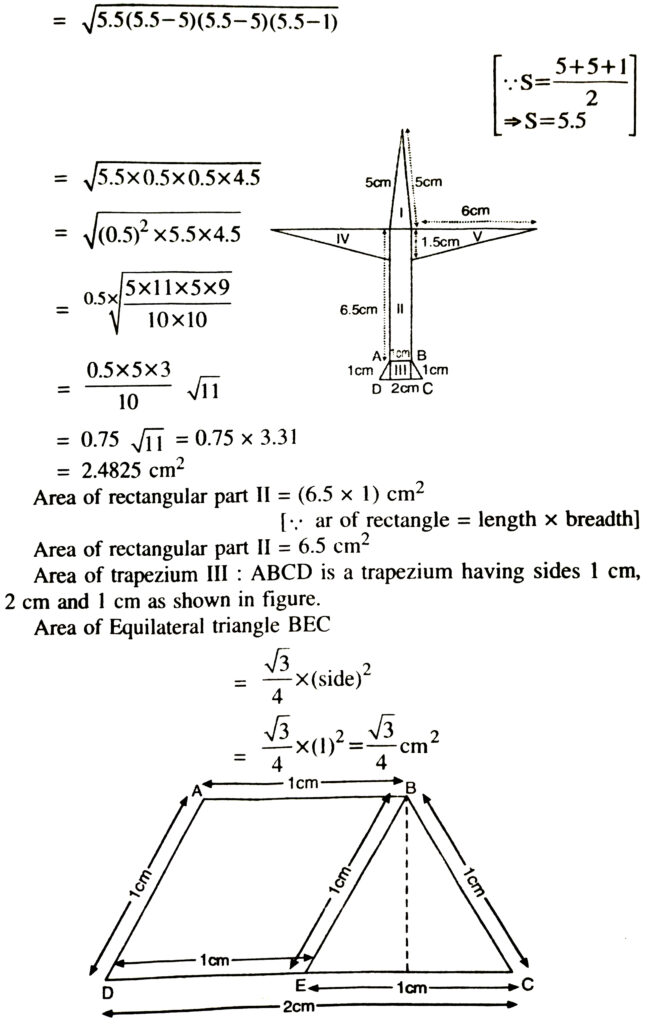
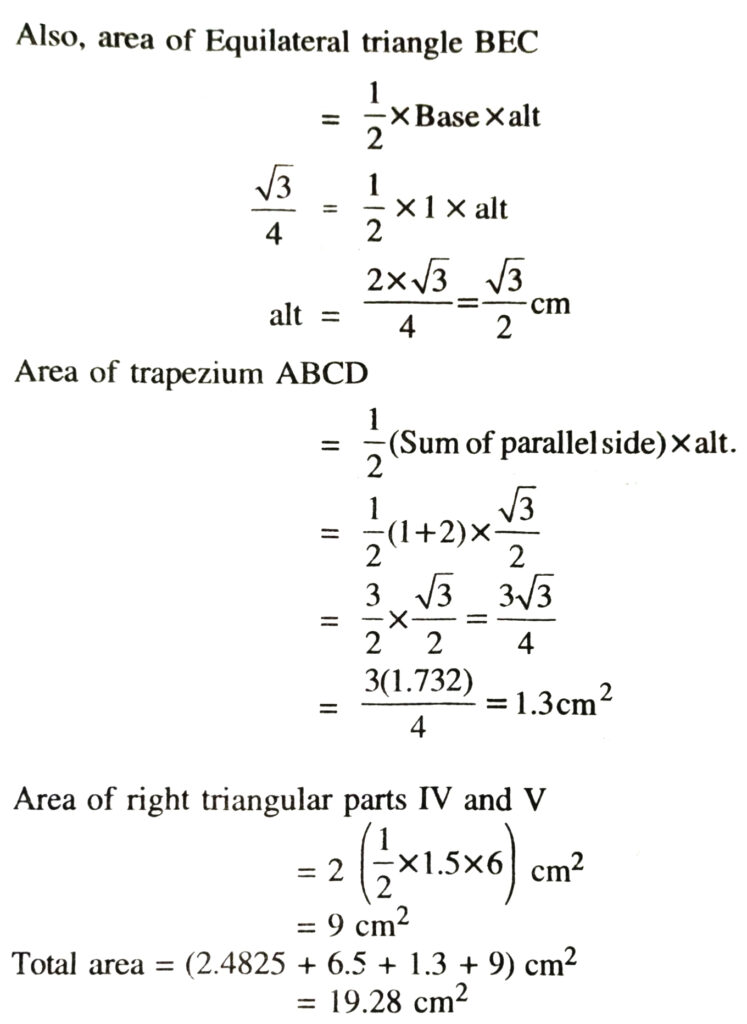
4. A triangle and a parallelogram have the same base and the same area. If the sides of the triangle are 26 cm, 28 cm and 30 cm, and the parallelogram stands on the base 28 cm, find the height of the parallelogram.
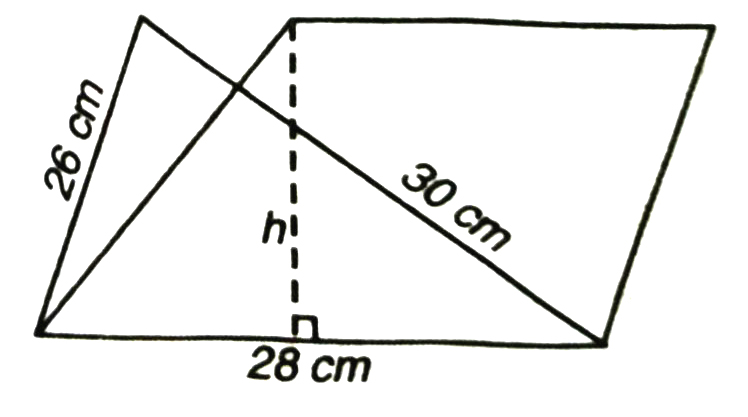
Solution.— Sides of triangle are 26 cm, 28 cm and 30 cm.
∴ Perimeter (2s) of triangle = (26 + 28 +30) cm
⇒ 2s = 84 cm
⇒ Semiperimeter s = 84/2
⇒ s = 42 cm
Using Heron’s Formula;
Area of triangle
= √42(42 – 26)(42 – 28)(42 – 30) cm²
= √42 × 16 × 14 × 12 cm²
= √2 × 3 × 7 × 2 × 2 × 2 × 2 × 2 × 7 × 2 × 2 × 3 cm²
= 2 × 2 × 2 × 2 × 3 × 7 cm²
= √2 × 2 × 2 × 2 × 2 × 2 × 2 × 2 × 3 × 3 × 7 × 7
= 336 cm²
Given that area of parallelogram = Area of triangle
⇒ Base × Corresponding Height = 336 cm²
⇒ 28 cm × Height = 336 cm²
⇒ Height = 336/25 cm
⇒ Height = 12 cm
Hence corresponding height of parallelogram is 12 cm.
5. A rhombus shaped field has green grass for 18 cows to graze. If each side of the rhombus is 30 m and its longer diagonal is 48 m, guess of how much area of grass field will each cow be getting ?
Solution.— Let rhombus shaped field be ABCD.
Therefore its each equal side; AB = BC = CD = DA = 30 m
and let its longer diagonal AC = 48 m. Diagonal AC divides the rhombus in two congruent triangles
(i) ΔABC and (ii) ΔACD. As we know that area of two congruent triangles are equal.
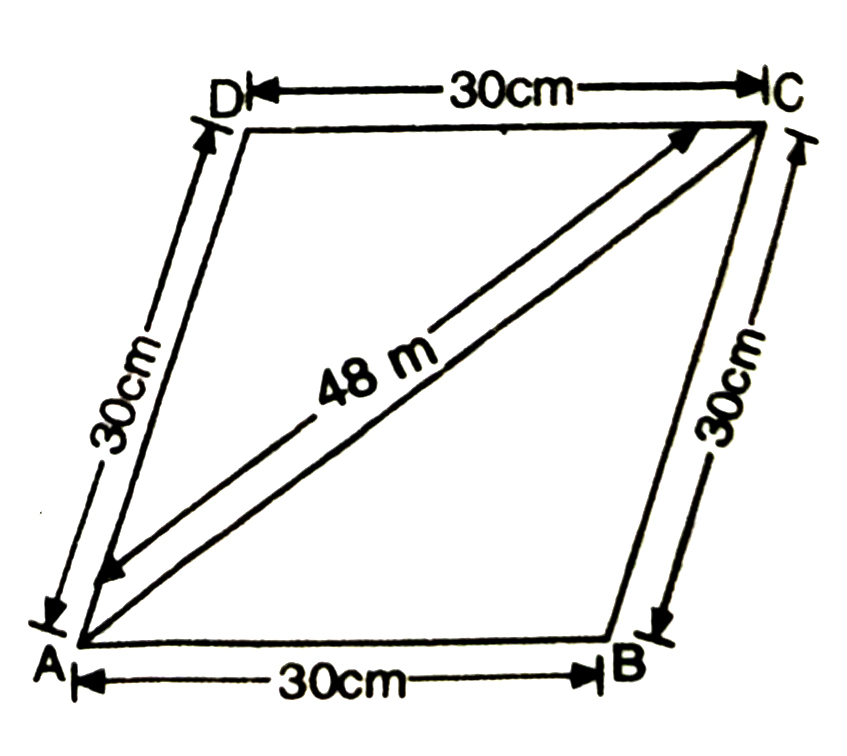
Therefore area (ΔABC) = area (ΔACD)
Now it is enough to find the area of ΔABC
whose sides are AB = BC = 30 m
and AC = 48 m
Perimeter (2s) of ΔABC = (30 + 30 + 48) m
⇒ 2s = 108 m
⇒ Semi-perimeter; s = 108/2 m
⇒ s = 54 m
Using Heron’s Formula; Area of ΔABC
= 54(54 – 30)(54 – 30)(54 – 48) m²
= √54 × 24 × 24 × 6 m²
= √3 × 3 × 6 × 24 × 24 × 6 m²
= √3 × 3 × 6 × 6 × 24 × 24 m²
= 3 × 6 × 24 m²
= 432 m²
Area of rhombus ABCD
= Area of ΔABC + Area of ΔACD
= ar. (ΔABC) + ar. (ΔABC)
[∴ ar. (AABC) = ar. (AACD]
= 2 ar. (ΔABC)
= 2 × 432 m²
= 864 m²
Field available for 18 cows to graze the grass = 864 m²
Field available for 1 Cow to graze the grass = 864/18 m²
= 48 m²
Hence each cow will get 48 m² of the field.
6. An umbrella is made by stitching 10 triangular pieces of cloth of two different colours (See Fig.) each piece measuring 20 cm, 50 cm and 50 cm. How much cloth of each colour is required for the umbrella ?
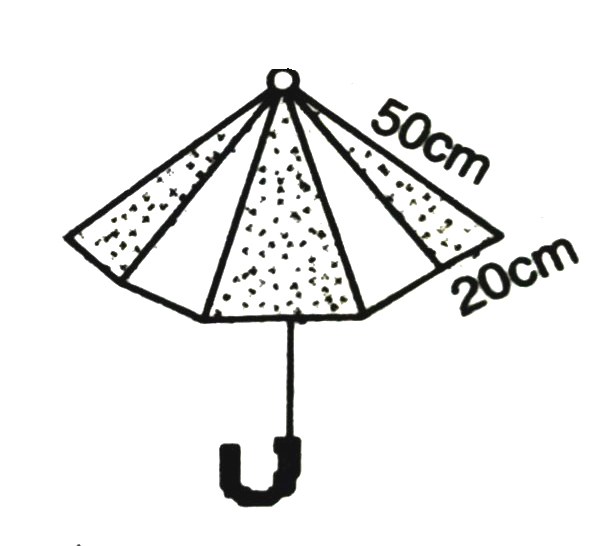
Solution.— Sides of each of 10 triangular pieces two different colours are 20 cm, 50 cm and 50 cm.
∴ Perimeter (2s) of a triangular piece
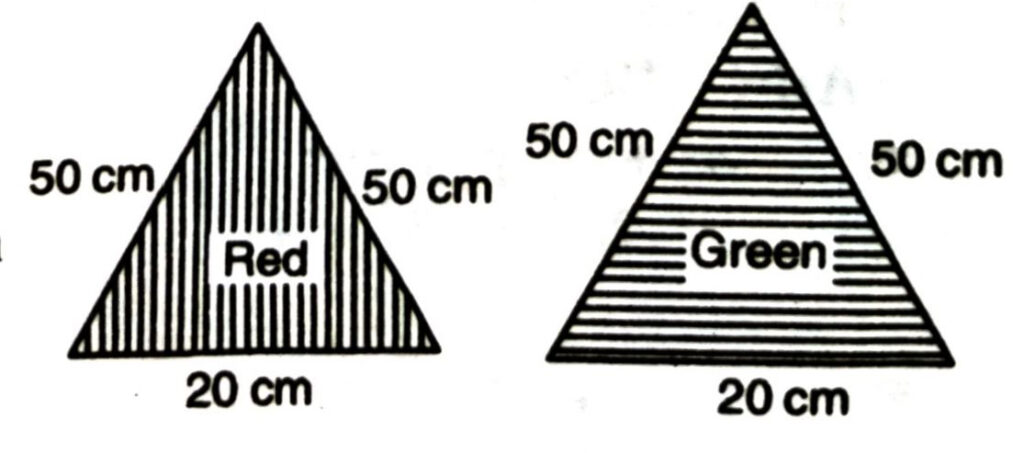
= (20 + 50 + 50) cm
⇒ 2s = 120 cm
Semiperimeter ; s = 120/2 cm
⇒ s = 60 cm
By using Heron’s Formula,
Area of each triangular piece
= √60(60 – 20)(60 – 50)(60 – 50) cm²
= √60×40×10×10 cm²
= √6 × 10 × 4 × 10 × 10 × 10 cm²
= √2 × 2 × 10 × 10 × 10 × 10 × 6 cm²
= 2 × 10 × 10 √6 cm²
= 200 √6 cm²
According to the question there are 10 triangular pieces of cloth of two different colours.
Therefore there are 5 pieces of red colour and 5 pieces of green colour.
Cloth required for each piece = 200 √6 cm²
∴ Cloth required for 5 red pieces
= 5 × 200 √6 cm²
= 1000 √6 cm²
Similarly cloth required for 5 green pieces
= 5 × 200 √6 cm²
= 1000 √6 cm².
7. A kite is in the shape of a square with a diagonal 32 cm and an isosceles triangle of base 8 cm and sides 6 cm each is to be made of three different shades as shown in Fig. How much paper of each side has been used in it ?
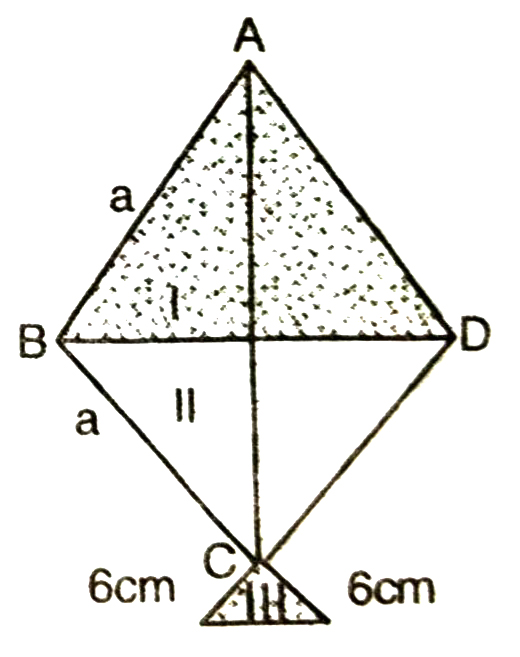
Solution.— Let ABCD be a square whose each sides is a cm and; diagonal
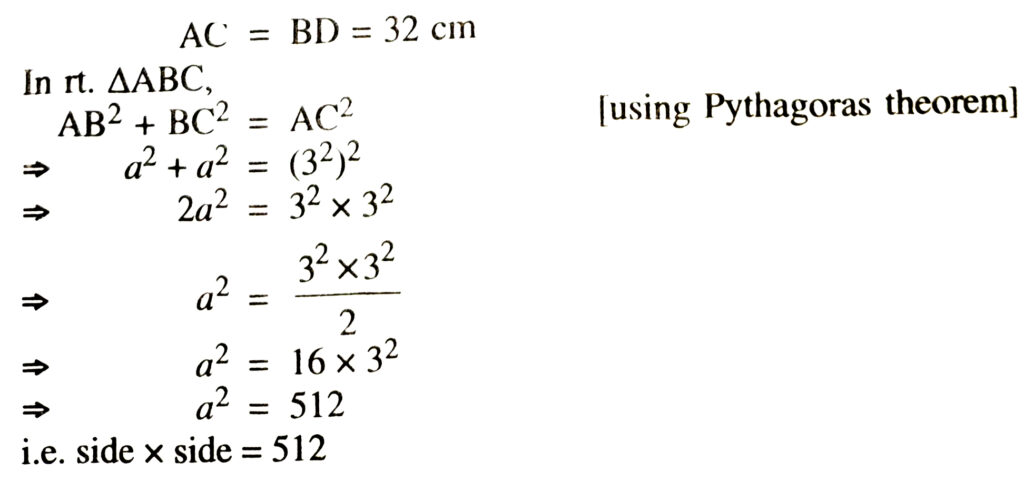
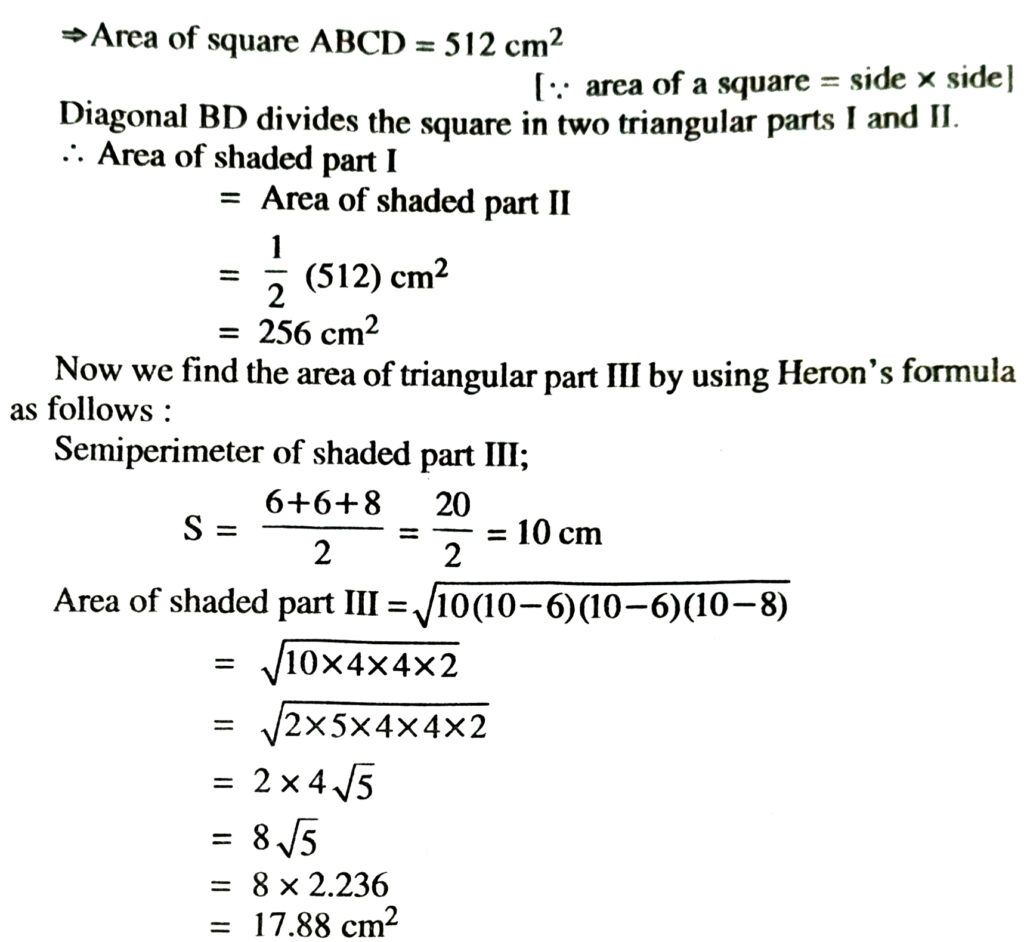
8. A field is in the shape of a trapezium whose parallel sides are 25 m and 10 m. The non-parallel sides are 14 m and 13 m. Find the area of the field.
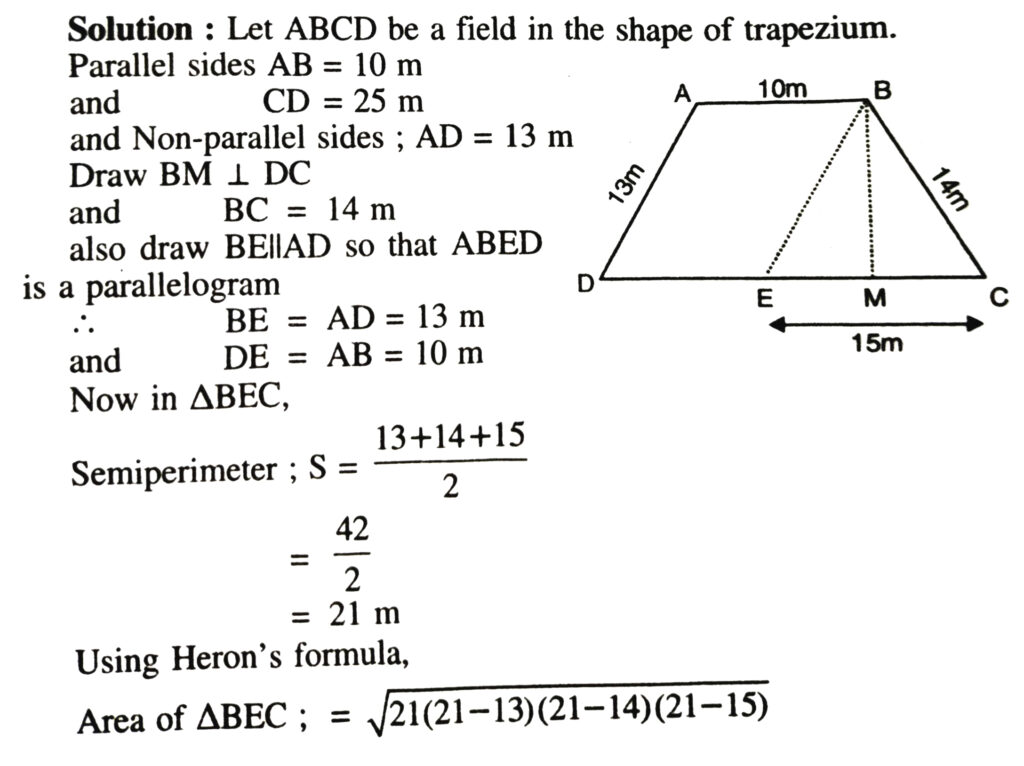
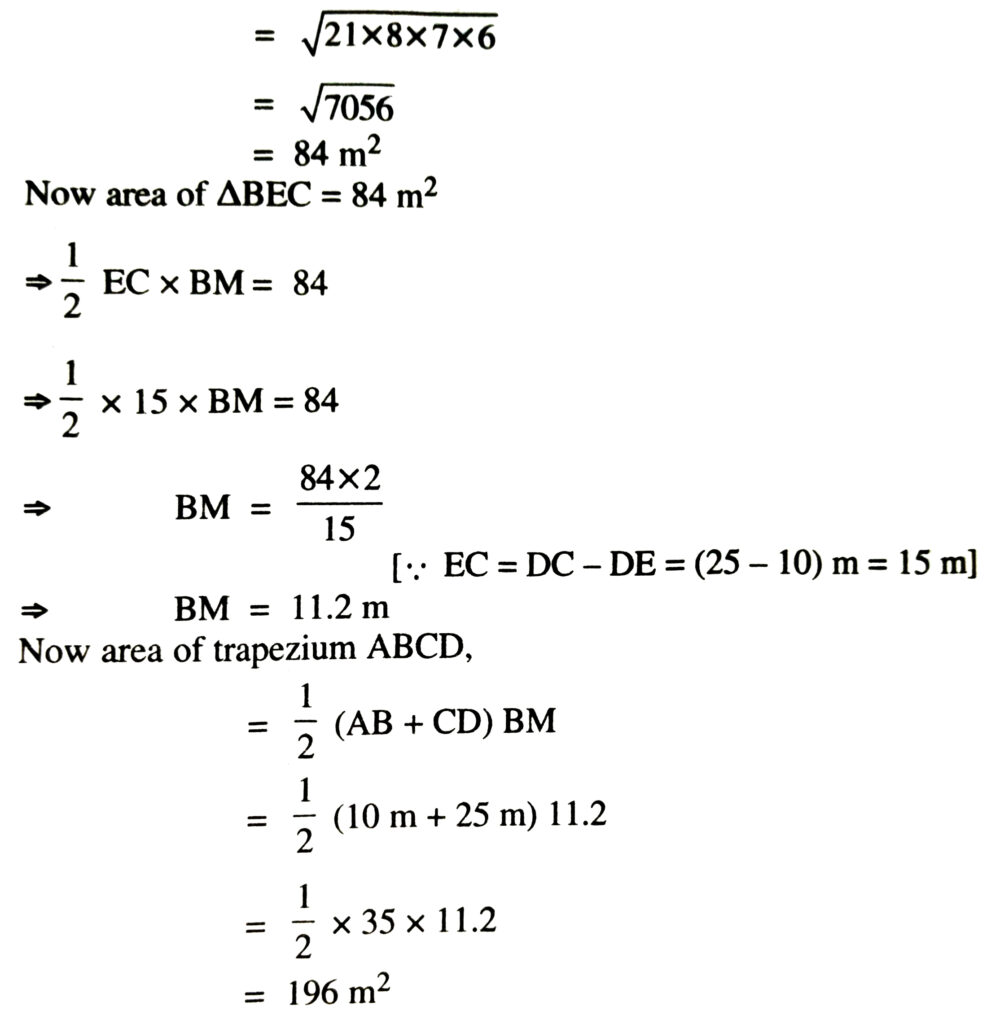
Follow on Facebook page – Click Here
Google News join in – Click Here
Read More Asia News – Click Here
Read More Sports News – Click Here
Read More Crypto News – Click Here